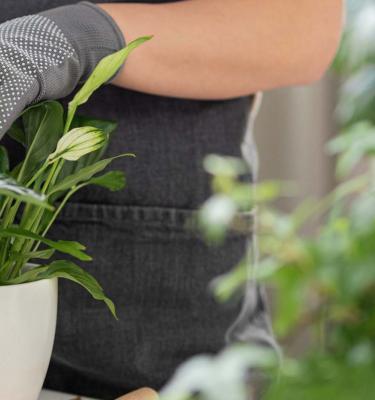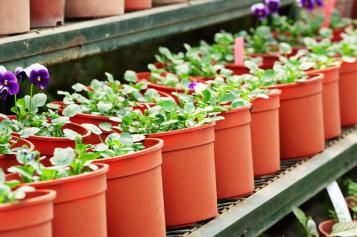Not all plants are the same. Some need to be treated with kid gloves while others are more robust, surviving quite harsh treatment. We’ve all seen plants in the back of a ute being hammered by wind and wondered how they will survive ... but they do!
So how do you give new plants the best possible start?
By:
- Understanding their history
- Reducing transplant shock
- Knowing how to transplant pot grown plants
Caring for new plants prior to planting
The nursery is brimming with gorgeous plants and they all look amazing, so how do you care for them at home?
You need to:
- Understand how they've been grown
- Reduce transplant shock
- Learn how to plant them out
Plants are grown in optimal conditions in nurseries, so you receive a healthy plant (good for the retailer and you) that has been grown as quickly as possible (good for the production nursery).
What this means is that regardless of what the label says about what the plant will tolerate, it is not yet toughened up or drought hardy.
Nursery plants are:
- Watered daily (maybe twice daily)
- Grown in glass houses or under shade cloth
- Planted in premium potting mix
- Cleaned (dead leaves etc removed)
- Grown in blocks or groups of the same or similar plants liking the same conditions
So when you get new plants home, be mindful of how they've been grown and treated and what you are asking them to now do.
Transplant shock occurs when you change a plant's growing situation. When establishing a new garden, it's unavoidable but there are a few things you can do to reduce its effects on your plants:
- Avoid disturbing the roots.
Some people recommend teasing out the roots, but only do this if the plant is pot bound (roots are circling in the pot). Otherwise, simply take the entire contents of the pot and plant into the garden - Water before removing the plant and after planting out
- Apply Scotts Osmocote® Pour+Feed All Plant Types to help it recover quickly from any shock
- Acclimatise plants to your garden:
- Water daily for the first couple of weeks, then reduceto every second day then eventually to twice a week for the first Spring/Summer.
Gardens can be 'trained' to tolerate being watered fortnightly over Summer and surviving on natural rainfall at other times but it takes time deep root systems to develop - Plants in the nursery support and protect one another. When planted out in the garden, they are suddenly exposed and vulnerable. Stake if necessary and provide protection from the wind if possible
- Plant into good soil enriched with organic matter to give them the best possible start. They may have a slight reaction to the change from potting mix to soil but they should adjust well
- Water daily for the first couple of weeks, then reduceto every second day then eventually to twice a week for the first Spring/Summer.
The best time of year to establish a new garden is in Autumn or Spring. Temperatures are usually mild and plants have time to establish before the hot Summer or cold Winter arrives.
How to plant container grown plants
When you get your plant home, water it and then prepare the garden for planting.
Follow these simple steps:
Step 1
Improve the soil by adding organic matter and working the soil
For tips on how and when to fertilise, click here
Step 2
Dig a hole slightly larger the than the pot.
Step 3
Place the pot in the hole to make sure the plant will be at the right depth.
The plant should be positioned so the top of the potting mix is level with the surrounding soil. If necessary, add or subtract soil from the base of the planting hole until you've got it right.
Step 4
Squeeze the sides of the pot to release the potting mix and plant. Gently hold the base of the stem or cup the root ball in your hand. Try to keep as much of the potting mix around the roots as possible.
Step 5
Place the plant in the hole, re-check the level is correct before carefully backfilling with soil and then press gently but firmly to exclude air pockets and to hold the plant in place.
Step 6
Mulch to a depth of 7-10cm and water in thoroughly with a dilute solution of Scotts Osmocote® Pour+Feed All Plant Types to assist with overcoming transplant shock.
Step 7
Water regularly to help the plant acclimatise.














